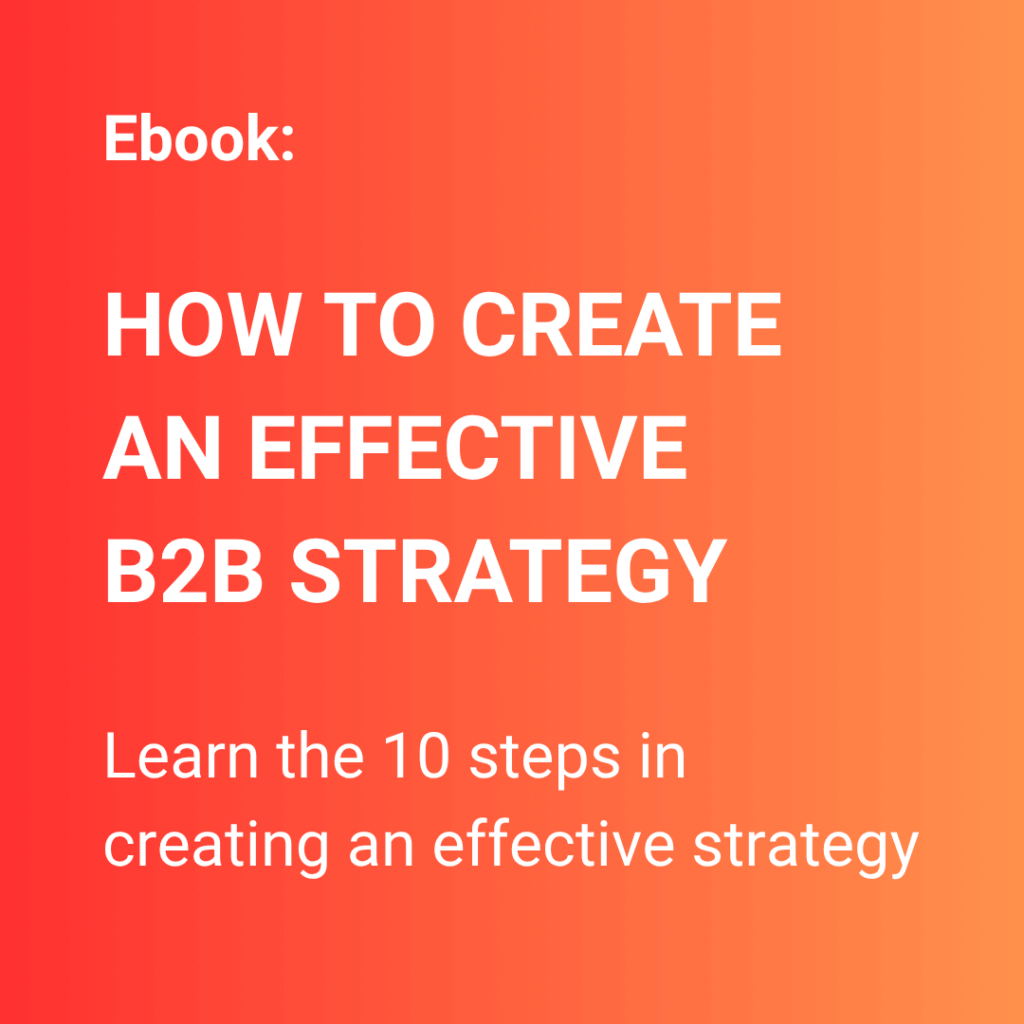In a world full of marketing noise, B2B companies are often left wondering:
- What counts as strategy?
- How do we create one?
This article breaks down marketing strategy into 10 practical steps, each one essential for building a marketing strategy that actually works.
Step 1: Market Orientation
- Solving real problems, not pushing features
- Talking to customers, not just about them
- Focusing on value, not vanity
Barriers: Many companies default to internal politics, product obsession, or competitive mimicry. But customers don’t care about your org chart. They care about what you can do for them.
💡 "Most customers don't care about your brand. They care about their own problems."
Step 2: Market Research
- Quantitative: Use statistically valid surveys to map market segments, brand perception, and category understanding
- Qualitative: Use interviews or focus groups to uncover motivations, objections, and unmet needs
According to Professor Mark Ritson, former faculty member at London Business School, if you don’t invest 5% of your budget in research, “you don’t know what you’re doing.”
For a service business, that means you’re probably making decisions based on assumptions rather than evidence. You may be building campaigns around what you think matters, instead of what your market truly values.
🔑 Key: Use a representative sample—not just your best clients or internal opinions.
According to the Ehrenberg-Bass Institute, 95% of buyers are not in-market today. As such, research must go beyond your current pipeline. It should help you understand the broader category and future customers.
If you only focus on the 5% actively looking, you’re missing the far bigger opportunity to build future demand.
Step 3: Segmentation
Not all customers are the same. Segmentation is how you identify the most meaningful differences between them.
Good segmentation:
- Is based on needs or behavior
- Is measurable and actionable
- Ties to how people buy
Bad segmentation:
- Uses only demographics
- Is too broad or too niche
- Can't guide actual marketing decisions
Step 4: Targeting
- Reaching broadly but with relevance
- Balancing light and heavy buyers
- Using tailored messages without splintering your brand
💡 "Don't go narrow. Go wide—but smart."
Step 5: Positioning
- Customer needs
- Your strengths
- Competitor claims
- Simple
- Relevant
- Defensible
- Easy to communicate
💡 "If you don't position yourself, the market will do it for you."
Step 6: Objectives
- Awareness (long-term brand building)
- Consideration
- Conversion (short-term activation)
Les Binet and Peter Field, renowned marketing effectiveness researchers, analyzed hundreds of campaigns through the IPA databank.
Their findings are clear: campaigns that balance long-term brand building (60%) and short-term activation (40%) significantly outperform those that don’t.
💡 "If everything is a priority, nothing is."
Step 7: Product
- Are we solving a real customer need?
- Are we focused, or offering too many variants?
- Is our service easy to understand and buy?
💡 "Great products come from deciding what not to offer."
Step 8: Price
- Cost-based – Safe, but doesn’t reflect value
- Competitor-based – Keeps you average
- Customer-based – Charges based on perceived value (best option)
- Overusing discounts trains customers to wait
- Sales teams can erode pricing in the field
💡 "When you stop managing price, you stop managing marketing."
Step 9: Promotion (Marketing Communications)
📊 Research from Kantar and Nielsen shows that 5–7 media channels is the sweet spot for effectiveness.
💡 "The medium doesn't matter until the message is clear."
Step 10: Place
- Are we online, offline, or hybrid?
- Is our service easy to find and engage with?
- Are we using partners or selling directly?
💡 "If they can't find you, they can't buy you."
Final Thought
Marketing strategy isn’t about doing more. It’s about making smarter choices, understanding your customers, and being consistent.
🔍 Diagnosis (33%)
🎯 Strategy (33%)
⚙️ Tactics (33%)
💡 "Strategy gives you direction. Consistency gives you results."
Ready to Build Your Marketing Strategy?
Need help developing a marketing strategy that actually works for your company? Let’s discuss how to turn these 10 steps into a practical plan that works for you.


